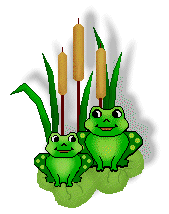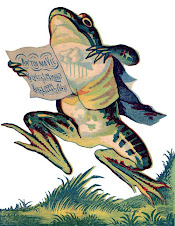
There are so many things for a young child to learn in school. Children come with eager faces all ready to learn how to read, count and discover the world. Those activities don't have to be separated into separate subjects. In fact when we embark on a new unit of study I like to brainstorm all the things we know about a subject, gather materials, games and activities, write down ideas and ask for suggestions from children, parents and librarians. By bringing the community together everyone is involved in the learning process. I try utilize activities that address all the Multiple Intelligences.

When I began my research for my Frog Unit Study, the children asked to have a frog in the classroom. Someone had an aquarium. Johnny's uncle had raised frogs from eggs and might be willing to come in and talk with the class about the experience. The librarian knew of lots of beginning readers both fiction like Frog and Toad but also non-fiction like Gail Gibbon's Frog Book.
Over the years I gathered games from yard sales, thrift stores and donations. I have been lucky to have some dedicated parents and grandparents come in to help make http://www.squidoo.com/edugames, workjobs, charts and class books.
The children I have taught as well as their parents have loved this way of learning and I hope that more teachers will find ways to make their classroom come alive with games, pets, plants, sensory tables and cuddly reading nooks.
Recently I discovered wordwalls as a way to help children write and learn to spell more independently. I combine such new methods with old fun ones like writing spelling words in salt trays or with paint brushes and water.


No comments:
Post a Comment